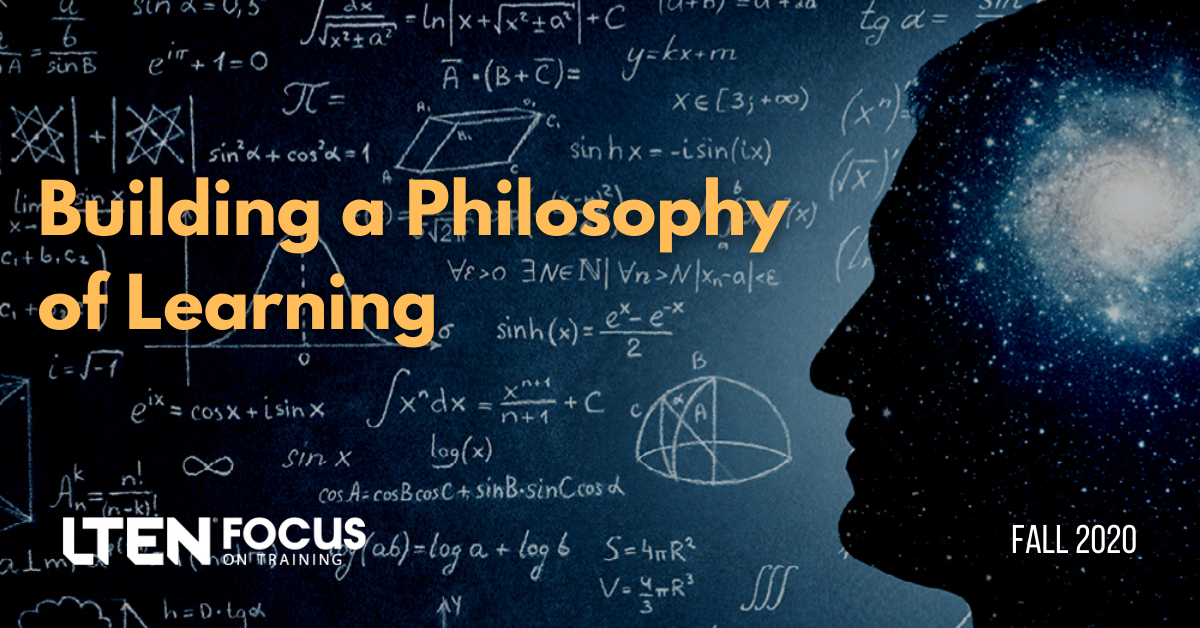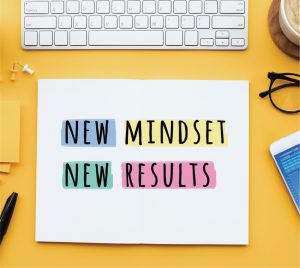
FEATURE STORY – By Karen Foster
Building a Philosophy of Learning
 In casual conversation, if you mention philosophy, people are likely to conjure up images of Socrates, Plato, Aristotle and a host of other great thinkers. Then, they’re likely to say to themselves, “Philosophy can be interesting, I guess, but I don’t see the practical application.” As a final step, they’ll probably change the subject.
In casual conversation, if you mention philosophy, people are likely to conjure up images of Socrates, Plato, Aristotle and a host of other great thinkers. Then, they’re likely to say to themselves, “Philosophy can be interesting, I guess, but I don’t see the practical application.” As a final step, they’ll probably change the subject.
However, when it comes to running a learning and development (L&D) team, it really is essential to have a guiding philosophy of L&D. Far from being a high-minded thing that’s long on theory and short on practicality, clearly defining a philosophy of L&D will help maximize a team’s effectiveness, both in programs developed and stakeholder interactions. So, with that in mind, let’s explore what a philosophy of L&D is, how to identify or define yours and how it can help you.
What Is a Philosophy?
A philosophy, put simply, is a system of thinking about something — anything really. One can have a philosophy about relationships, saving for retirement or building a great football team.
We construct systems of thinking out of many pieces, one key piece being assumptions. Sometimes, our assumptions are based on facts, like the science of gravity and the laws of physics. Other times they’re not, like when they are driven by a single experience or incomplete information. Either way, assumptions are a core element of a philosophy, which drives our actions.
Pause for a brief moment and reflect on this statement: Assumptions guide our actions.
Agree? Disagree? Confused? All are valid.
Consider this example: Imagine a glass teetering on the edge of a table. What do you do? You move it. Why? Because, like most of us, you probably imagine it falling and shattering. Most likely, you assume that’s what it will do.
That assumption, based on science and experience, leads you to conclude that glass objects shatter when dropped from a significant height. So, you take action and move the glass. Your assumption guided your actions.
Assumptions are constructed into a philosophy when you:
- Identify and organize your assumptions.
- Test or validate assumptions via data, experience, etc.
- Use assumptions to develop guiding principles.
- Identify how to apply guiding principles to your work.
- Use the guiding principles to inform your actions in developing programs, engaging with stakeholders and so on.
A philosophy of L&D is essential for making an L&D team as effective as possible.
Teams that lack a philosophy of L&D run the risk of being inconsistent and being
deemed less likely to be strategic partners across an organization.
How Do I Build/Identify a Philosophy of L&D?
We’ve already outlined five high level steps to building a philosophy. However, let’s take a closer look at how assumptions can be used to create guiding principles and how those principles can guide action.
Examined closely enough, any learning program can reveal its designers’ assumptions about how people learn. For example, the team putting forth a program that is content-heavy, purely didactic and relies on banal repetition probably assumes that simply exposing a learner to information translates into remembering or absorption of that information.
 Alternatively, a program rich in active learning activities, self reflection and learner Q&A was likely designed by a group who assumes that learners need to process, construct and integrate information in order to remember and absorb it.
Alternatively, a program rich in active learning activities, self reflection and learner Q&A was likely designed by a group who assumes that learners need to process, construct and integrate information in order to remember and absorb it.
In that case, a team has adopted a philosophy that might “assume” things like:
- It’s best to limit content to only what is necessary for the targeted learners in order to avoid cognitive overload.
- Getting learners to actively engage with content is better than having them passively “absorb” it.
- The effects of cognitive biases, such as the Curse of Knowledge (assuming the learner has the background knowledge to fully comprehend new material), must be considered and addressed when developing learning programs.
These and related assumptions can be “rolled up” into a guiding principle that sounds something like this: “Our L&D team will apply scientific principles of learning to program design.” A team that has this as one of its guiding principles is more likely to create effective programs, more likely to be recognized by its stakeholders as learning experts, and less likely to get caught up in the latest unproven fads.
Of course, an L&D team needs more than one guiding principle. Assumptions about other aspects of L&D can be used to create additional guiding principles.
Examples of Guiding Principles
Your team will no doubt want to determine its own guiding principles. However, let’s look at a few examples to help spur your thinking.
One guiding principle might relate to how the team views itself and interacts with its internal customers. It might go something like this: “Our team is a service provider to our internal customers, but also an expert guide.”
A team with this guiding principle is less likely to just deliver what is asked of it, regardless of whether it’s the best approach or not, and more likely to suggest more effective courses of action, back those suggestions with a strong rationale, and educate its internal customers in the process. Those L&D teams will be viewed by stakeholders as expert consultants and thought partners rather than just tactical delivery teams. Below are some examples of other potential guiding principles.
“Put the learner first.” Teams that adopt this principle might leverage a range of related assumptions to guide their program designs. For example, they might:
- Deliver content in engaging ways that are directly relevant to the learners’ job requirements, needs and objectives.
- Design programs that account for the working conditions and limitations of the learners (e.g., easily accessible mobile formats for field-based personnel who spend a lot of time in their cars, microlearning modules for “on-demand” use for field personnel, etc.).
- Recognize that the learners have agency and incorporate choice into how they access and use content.
“Tell the Why.” Teams that adopt this principle might apply it to program design as well as to their interactions with internal customers and other stakeholders. It’s based on the assumptions that learners and stakeholders respond better when treated as adults and are more inclined to engage when they understand and “buy into” the rationale for the engagement.
Still other guiding principles might include:
- Solve problems rather than deliver content.
- Leverage the learner’s prior knowledge.
- Involve the learner.
What About Your Team?
Does your L&D team have a philosophy of learning that encompasses a set of guiding principles? If not, then you might want to consider developing one. Your philosophy might contain some of the principles listed above, as well as others.
The key points to remember are to:
- Base your guiding principles on verified assumptions.
- Apply your guiding principles to your work.
All the best principles in the world are useless if they’re just words on a page and never translated into action.
Karen Foster is head of learning strategy and solutions for Salience Learning. Email her at kfoster@saliencelearning.com.








